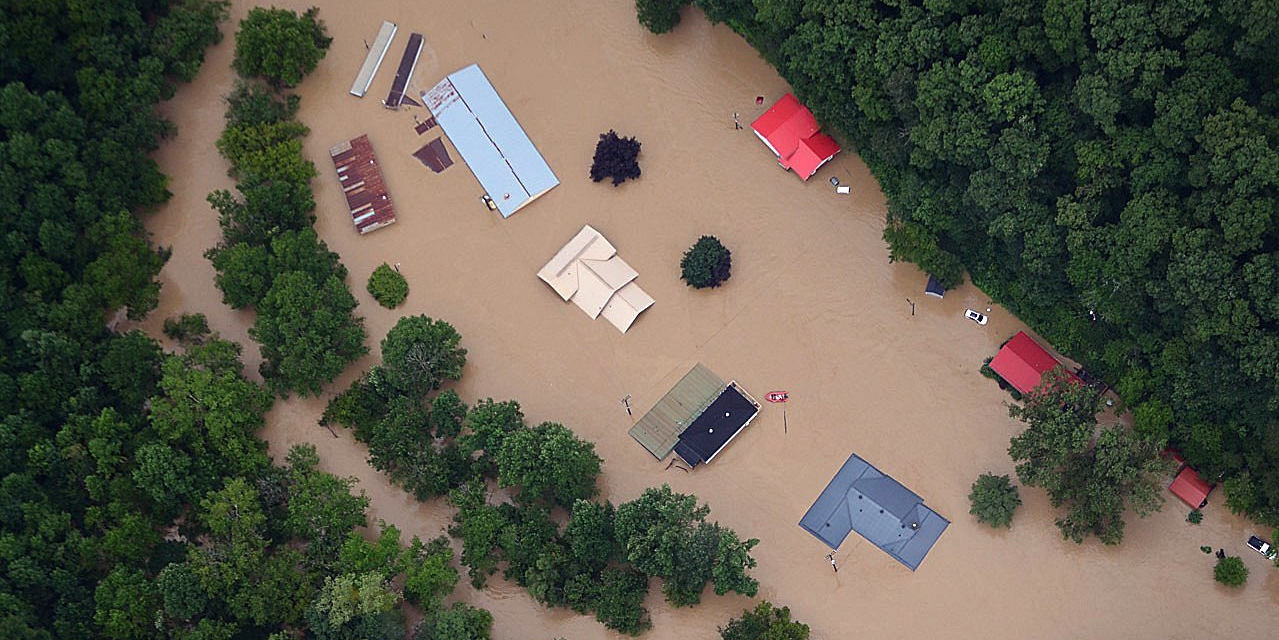Flash Floods: What They Are, How To Stay Safe, And Understanding Flood Warnings

Table of Contents
What are Flash Floods?
Flash floods are rapid rises in water levels, often in normally dry areas, resulting from intense rainfall or dam failures. They are characterized by their speed and destructive power, making them particularly dangerous. Understanding the causes and characteristics of flash floods is the first step in preparedness.
Causes of Flash Floods:
- Intense rainfall over a short period: Torrential rain, often associated with thunderstorms or hurricanes, is a primary cause. The ground becomes saturated quickly, unable to absorb the excess water, leading to rapid runoff and flooding.
- Sudden dam or levee failures: Breaches in dam structures or levee systems can release large volumes of water in a short time, causing catastrophic flash floods downstream.
- Mudslides and debris flows: Heavy rainfall can trigger mudslides and debris flows in mountainous regions, which can dam rivers and cause sudden flooding when the blockage gives way.
- Rapid snowmelt in mountainous regions: A sudden rise in temperature or heavy rainfall can rapidly melt snowpack, causing a surge of water into rivers and streams, leading to flash flooding in downstream areas.
Characteristics of Flash Floods:
- Speed of onset: Flash floods develop quickly, often within six hours or less, leaving little time for evacuation or preparation. This rapid onset is what makes them so dangerous.
- Water volume and force: The sheer volume and force of the fast-moving water can sweep away cars, houses, and other objects in its path. The strong currents make escape extremely difficult.
- Locations: Flash floods can occur in various locations, including mountainous regions, canyons, deserts, and even urban areas with poor drainage systems. Areas with steep slopes are particularly vulnerable.
Recognizing Flash Flood Warning Signs
Recognizing the warning signs of a flash flood is critical for timely action. Staying informed and being vigilant are key elements of preparedness against sudden flood events.
Weather Conditions:
- Heavy rainfall: Sustained heavy rainfall, especially over a short period, is a major indicator. Pay close attention to rainfall intensity and duration.
- Rapidly rising water levels: Monitor water levels in streams, rivers, and low-lying areas. A sudden and significant increase in water level is a serious warning sign.
- Thunderstorms: Severe thunderstorms are often associated with flash floods. Heed thunderstorm warnings issued by your local meteorological service.
Environmental Signs:
- Increased water flow in streams and rivers: A noticeable increase in water flow speed and volume can indicate an imminent flood.
- Debris accumulation in waterways: Increased debris, such as branches and leaves, indicates higher water levels and increased flow.
- Rapidly changing water color: A sudden change in water color, often becoming murky brown, can signify sediment runoff and increased water volume.
- Unusual sounds like roaring water: The sound of rushing or roaring water, especially from normally quiet streams or rivers, is a significant warning.
Official Warnings:
- Flash Flood Watches: Conditions are favorable for flash flooding. Be prepared to take action.
- Flash Flood Warnings: Flash flooding is occurring or is imminent. Take action immediately.
- Flash Flood Advisories: Flash flooding is possible. Stay informed and monitor conditions closely. It is crucial to heed all official warnings and alerts issued by your local weather service or emergency management agency.
Staying Safe During a Flash Flood
If a flash flood is imminent or already occurring, immediate action is vital. Your safety is the priority.
Evacuation:
- Importance of immediate evacuation: If instructed to evacuate by authorities, do so immediately. Do not delay.
- Evacuation routes and assembly points: Familiarize yourself with pre-determined evacuation routes and designated assembly points in your area.
- What to take with you: Gather essential documents, medications, and other vital items in a waterproof bag before a flash flood threat occurs.
Shelter:
- Seeking higher ground immediately: Move to higher ground quickly and stay there until the danger has passed. Avoid low-lying areas and floodplains.
- Avoiding flooded areas: Never attempt to walk, swim, or drive through flooded areas. Even shallow water can be deceptively powerful and swiftly carry you away.
- Staying away from power lines and downed utility poles: Flooded areas often have downed power lines, posing a significant electrical hazard.
Vehicle Safety:
- Never driving through flooded areas: The water depth may be deceiving, and even a small amount of water can sweep your car away.
- Turning around and finding an alternative route: If you encounter a flooded road, turn around and find a safer route. Do not attempt to drive through it.
- If trapped in a vehicle, getting out immediately and seeking higher ground: If your vehicle becomes trapped in floodwaters, get out immediately and seek higher ground.
Conclusion
Flash floods are a serious threat, but with proper preparation and awareness, you can significantly reduce your risk. Remember to stay informed about weather forecasts, recognize the warning signs, and know your evacuation plan. By understanding the nature of flash floods and taking proactive measures, you can protect yourself and your loved ones from the devastating effects of these sudden and powerful events. Stay prepared and stay safe from flash floods! Develop a comprehensive flash flood preparedness plan for your home and family. Understanding flash flood safety is a crucial step in protecting yourself and your community.

Featured Posts
-
 Fyrsta 100 Rafdrifin Porsche Macan Upplysingar Og Eiginleikar
May 25, 2025
Fyrsta 100 Rafdrifin Porsche Macan Upplysingar Og Eiginleikar
May 25, 2025 -
 Analyzing The Wolff Russell Exchange Underrated Driver And Team Principals Perspective
May 25, 2025
Analyzing The Wolff Russell Exchange Underrated Driver And Team Principals Perspective
May 25, 2025 -
 Soerloth La Liga Da Kasip Kavurdu 30 Dakikada Doert Gol
May 25, 2025
Soerloth La Liga Da Kasip Kavurdu 30 Dakikada Doert Gol
May 25, 2025 -
 The Jenson Fw 22 Extended Collection A Comprehensive Guide
May 25, 2025
The Jenson Fw 22 Extended Collection A Comprehensive Guide
May 25, 2025 -
 Artfae Daks Alalmany Ila 24 Alf Nqtt Bfdl Atfaq Jmrky Byn Washntn Wbkyn
May 25, 2025
Artfae Daks Alalmany Ila 24 Alf Nqtt Bfdl Atfaq Jmrky Byn Washntn Wbkyn
May 25, 2025
